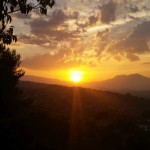 When I started on this post it was exactly one month since I had left the Netherlands to spearhead our move to Spain. It is a move that has not been short of challenges, not for us and not for our horses. Physically, mentally and emotionally it has taxed all of us to varying degrees and, as I try to make sense of it all, from the jumble of observations and impressions that jostle for attention I find myself drawing pieces, turning them around this way and that to see if and where they might intersect with others. There must be some direction to it, some pattern, a sense of jigsaw coherence. But nothing comes. It will, I know, yet I must drop it first, walk away from it, stop nagging it like a dog with a bone. So I do. And then it comes in the depth of the dark when epiphanies tend to drag me from sleep. There is no dawn without night to precede it. But what does the daylight reveal?
When I started on this post it was exactly one month since I had left the Netherlands to spearhead our move to Spain. It is a move that has not been short of challenges, not for us and not for our horses. Physically, mentally and emotionally it has taxed all of us to varying degrees and, as I try to make sense of it all, from the jumble of observations and impressions that jostle for attention I find myself drawing pieces, turning them around this way and that to see if and where they might intersect with others. There must be some direction to it, some pattern, a sense of jigsaw coherence. But nothing comes. It will, I know, yet I must drop it first, walk away from it, stop nagging it like a dog with a bone. So I do. And then it comes in the depth of the dark when epiphanies tend to drag me from sleep. There is no dawn without night to precede it. But what does the daylight reveal?
Humans on the move
The move itself was jarring, perhaps rendered unduly demanding by the deadline we had set ourselves. Acutely aware of the huge differences in climate between the south of the Netherlands and that of Spain, we knew that we needed to move the mares in either spring or autumn, when temperatures and other conditions are less dramatically misaligned. Although this seemed fairer for both humans and horses, the latter were our primary concern, especially Pip, the elder and more vulnerable of the two mares.
Our plan was to complete the move by mid-May at the very latest. This would give the horses a chance to become accustomed to the warmer climate well before the harsh heat of high summer. So we got down to it, trying to fit in as much of the additional work as possible without disrupting our primary routine of earning a living and caring for our horses. And we completed the move within six weeks after making the decision to do so.
Vicki was the first to experience the adverse effects of our frenetic pace. All winter we had kept sickness at bay amidst frequent reports of friends and acquaintances coming down with a nasty bug, which knocked most out of action for up to three weeks or more and was often accompanied by complications in the form of bronchitis or a lung infection. By mid-April Vicki had begun to develop a cold, which worsened to include bouts of fever but a generous application of Vitamin C helped her surface again, enough to complete the move to Spain, arriving two days after me and within hours of the horses entering their new home about forty-five minutes to the west of Málaga city.
Stumbling into Spain
Within days of her arrival Vicki had a relapse, brought on in part, I suspect, by a sudden surge in translations from both existing but especially new clients. The latter, we had learned over the years, are not to be turned down, especially at a time when economic crisis is still very much a reality for most of Europe and our own industry is being turned on its head. Yet, given the circumstances, perhaps we should have. Vicki’s relapse was severe. She developed bronchitis and spent ten days in what was effectively suspended animation or so it seemed.
The horses were also doing it tough and in between a steady stream of work, I found myself juggling time and commitments to Vicki, our mares and our clients, spending up to three hours in a car every other day to make the long trip from where we were staying to the mares. For the first three weeks our home was that of Vicki’s twin sister, Agathe, and her partner, Ron, their simple but charming, sprawling finca in the forested hills of the Montes de Málaga to the east of the city with views over largely unspoilt nature down to the sea. Although we were and are very grateful to them, we knew that we had to find a home closer to the horses as soon as possible.
Yet before that quest could begin in earnest, the bug which I had evaded for so long brought me down as well. Soon I found myself sniffing and snorting side-by-side with Vicki. Through clogged noses, burning foreheads and rasping chests, it was impossible not to see the irony of the situation in which we found ourselves. Here we were, escapees from the damp, cold, flat earth that is the norm in the low lands from which we had come, beset by the very ailments that seem so endemic to them amongst majestic sun-drenched hills sloping down to a beckoning sea under a blue sky in inviting temperatures. It seemed to me that we had stumbled into Spain.
Horses on the move
If we had known how difficult conditions would have been for the horses both during the move and now here in Spain, would we have gone ahead with our plans? Probably not. The move alone would have done it for us: one day travelling to Spain and then three days crisscrossing the Iberian peninsula covering perhaps 4000 kilometres instead of 2500. No, we would have abandoned the move for that reason alone. Pip’s panic-stricken emergence from the lorry seemed to confirm that.
And then her response to the conditions into which I had cast her would have simply emphasised the utter stupidity to which we had seemingly abandoned sanity. The flies, not only the nasty ones of the horse variety, which stab and draw blood, but also the smaller, ostensibly more innocuous ones, those little monsters deemed the vessels which link Pip’s eyes to her nasal cavity fitting repositories for their eggs, according to the vet who examined her red, puffy eyes, prescribing drainage with a special solution twice a day for two weeks to clear them out. Anaïs even had the tender flesh on her lower belly and between her rear legs hacked swollen and raw by the blood-thirsty vampires masquerading as flies. On the off-chance that the mares might need them, we had brought fly masks and rugs with us and both mares were immediately condemned to life wrapped in both.
Pip’s predilection for rolling created another set of complications. She had lost weight during the move and its aftermath leading her false hips to extrude more than they normally would have. The ground being hard and stony where she and Anaïs were confined, every time she rolled, she cut herself open on those points, as well as her hocks and her knees. Although I treated the injuries, I felt a bit as though I was trying to towel a running bath dry. Pip seemed to have embarked on an endless vicious cycle of ever bloodier injury.
Settling in
Confined to their own quarters, which consisted of a moderately sized yard with a walk-in shelter, for quarantine and introductory purposes during the first few days, our mares were clearly challenged by their new surroundings. Soon, however, they were released onto a large track with its own walk-in shelter, where they were able to stretch their legs and even wander up a small hill if they so desired, while having the opportunity to ogle and sniff the herd over a fence.
Pip’s eyes soon began to improve as a result of the treatment and protective fly mask, while her fly sheet kept the Andalusia’s equivalent of airborne piranhas at bay. Generous lashings of Derfen rapidly reduced Anaïs’ swellings and healed her lacerations. Her coat of dense hair coupled with what seemed to be a growing resistance to all flies and bites soon allowed her to go without a fly sheet, although her head and ears still required protection.
It looked as though the mares were settling in and that our strategy of care and rest were beginning to pay off. Vicki and I had decided not to pursue any strenuous activities with the horses for the first few weeks, opting instead just to spend time with them or to do a bit of grooming. This type of passive support, we hoped, would help them get through what we had expected to be a difficult period of adjustment. Although we had sought to minimise the effects of the massive change in the mares’ living conditions, we knew that the adjustment they would demand was likely to be major. Fortunately, this strategy also allowed us to deal with our own physical discomfort at the same time, while simultaneously finding a home for ourselves. By the time we had recovered and had found a home with breathtaking views, the mares seemed ready for the next big step.
Into another herd
While being led up through the herd enclosure to a courtyard in our absence, Anaïs had kicked another horse and Karryn, the owner of our new yard, Equinatural, was a bit nervous about introducing our mares into the herd. Once we had identified the fact that, in the light of Anais’ difficulties in relating to other horses and her acute focus on humans, the incident was more likely to have been the result of human error, we decided to proceed with their introduction to the herd but to exercise caution while doing so.
For a number of days our mares spent a few hours in the round yard, which was located within the herd enclosure. Consequently, they were surrounded by the herd but were simultaneously protected from the other horses by the wooden posts and rails which separated them. About three weeks after their arrival, Pip and Anaïs were released into the herd. What occurred next took me by surprise, especially when considered in the light of their previous experience of being introduced into a herd in their last livery yard in Belgium.
This time Anaïs was reluctant to take the initiative, as she had done in the past. In addition, neither of our mares was overly enthusiastic about joining the herd, as they had been in the past. Instead, they were reluctant to leave the round yard to walk into the herd and, once Vicki had led Anaïs out, it was Pip who took the initiative, leaving her friend to follow. And Pip’s instincts led her to seek what she felt was a safe haven: the part of the herd enclosure where our mares had spent their first few weeks isolated from the herd.
Progress and new challenges
Over the next few days Pip and Anaïs spent the daylight hours with the herd and the nights on their own, until Karryn felt that they were sufficiently familiar with the terrain, which is much more extensive and uneven than the space available to the herd in Belgium. Although they are now permanently part of the herd, our mares are still somewhat reserved and tend to keep more to themselves. Yet they seem to be much safer in the herd than they were in Belgium, even though the ground is strewn with rocks and boulders of varying sizes and the earth is punctured with protruding roots and broken tree trunks. Perhaps the most important reason for this is that they are not having to compete with the other horses for resources, feed in particular, nor are there any narrow entrances in which bolting horses risk being jammed and rammed.
Now that she is permanently in the herd, Pip has constant access to soft sand in which to roll. Thanks to this, her injuries are healing well and she is not picking up new ones. Vicki and I started to engage our mares in more strenuous interaction, taking them for walks through the hilly terrain and resurrecting our “straightness training”. The mares have also been helped with Equine Touch and Pip has finally reached the stage where there is no longer a single move or procedure which she will not allow me to perform. For ages she held out against the stifle move. It was too intimate for her. Now it is no longer an issue. Indeed, she even spreads her legs for me to track down flies seeking whatever it is they do on the tender skin of her inner thighs and under her tail.
Yet, as we move forward, we are encountering new challenges. Anaïs is beginning to find the terrain seriously challenging. It is hard enough to help her self-trim her hooves to a certain extent but she is not entirely sound. Vicki suspects that it may be her old ring-bone issue coming back to haunt her. I have trimmed her hooves and have fitted her with flexible Equine Fusion jogging shoes. Although she is clearly more comfortable on our walks with these shoes on, she is still collapsing slightly through the left fore, her ring-bone leg. Is it the hard earth of this encrusted land which is revealing the existence of a condition that has never left her? Yet there were no soft sods of damp earth to cushion her movement in any of the high-traffic areas in her former home in Flanders. Why was it not fully evident then? The dry conditions prevailing her, are they compounding the situation? Questions, we have them. Now we go in search of answers.
Pip too has had to contend with another challenge, although it has fortunately been resolved. She came down with a mild case of sunstroke. Her eyes went dull, she refused to eat and retreated into herself. Although I detected the symptoms, I could not ascertain the cause. Fortunately, Karryn has spent a good deal of time with horses in this part of the world and instantly recognised what we were dealing with. On her recommendation, I hosed Pip down directing most of the water over her chest and neck. It was almost miraculous to see the transition. She moved into the stream of water seeking out its rejuvenating powers, her eyes lit up and regained their lustre, and she was ready to eat again, all this in the space of minutes.
Natural
Looking around me here at Equinatural, I am aware that similar efforts are being made towards keeping horses in “natural” conditions, as they were in our former yard, 4 Horses Creek in Belgium, the horses being kept barefoot in a herd without rugs. Indeed, this commitment even extends to the way in which humans interact with and ride their horses. So-called “equestrian sports” are eschewed, as are bits. “Natural” and “natural horsemanship” would appear to be the source of inspiration although, with the exception of the liberal use of potentially harsh rope halters, the forceful methods of Parelli are not evident here. In fact, it is challenging to see Karryn leading a hacking party out on the trail astride her trusted horse in shorts and sandals with nothing more than a saddle pad and neck rope, a halter and lead serving as nothing more than a backup, if ever required. It is also reassuring to know that, unlike the owners of the previous yards where our mares were accommodated, she is first and foremost a horse person. Horses, as it were, is what she does, and the relationship she develops with them offers greater safety and security than any protective devices and implements of control most “horse people” rely on.
Yet there is a niggling thing, which has accompanied my search for “natural” accommodation both in the lush low lands of north-western Europe and the arid, hard lands of southern Iberia. It is the same troublesome thing that has caused me to cast a questioning glance at the various iterations of natural horsemanship. Over the years I have started to pin it down. It is an awareness that all is not as “natural” as implied or suggested. True, we are beyond bits and metal on the hooves, and true, there will never be a perfect “natural” solution. There will always be something. If it is not banging a heavy metal halter connector against the horse’s head to force it to back up or terrifying the creature into yielding its hindquarters with a whip slicing into the sand at its side, then perhaps it is a lead pulling a rope halter hard against the sensitive poll in a vain attempt to wrestle the equivalent of a small car’s weight of bone and muscle into submission in what is supposed to pass as an exercise in leading. But are these not simply minor aberrations in our quest for the “natural” solution for our horses?
Parelli’s version of the gentle natural horsemanship art of longeing
Beyond natural
“Natural”, the word does sound so utterly sexy, does it not, especially to those of us who increasingly insist on finding a way of keeping and interacting with horses, which prioritises their interests and wellbeing? It is enticing in its presumed promise of serenity and balance, is it not? This is how horses survive in the wild. This is how they relate to each other in the absence of humans. This “natural” condition, it should be our guiding principle, our beacon to light our way through the dark spread by conventional husbandry and horsemanship. All that we do with horses should fit within this paradigm, should it not?
But are we not fooling ourselves? Is nature always nice? And where, I ask you, do horses survive anywhere on this planet in the absence of human control or influence? Even the feral brumbies of Western Australia and the world’s only true wild horses, the Przewalski of Mongolia – amongst the most sparsely populated parts of the earth – are unable to escape it. And are these wild and feral horses no more than a small fraction of the globe’s equines, the vast majority of whom simply try to survive under the rigours of human domination, which range from firm to savage. Is it not time to admit that, when it comes to horses, “natural” is a myth, something which largely exists within our imagination and not much anywhere else?
Yet, what if there is more? If you strip away “4 Horses Creek”, “Equinatural” or any other name we humans may bestow on an equine establishment to nurture the notion of “natural”, and if you then coldly examine all that is done in its name (and not merely the “aberrations” which I mention above), how much will you find that is utterly “unnatural”? You will certainly not need me to help you answer that question and you will definitely not need me to come up with the answer: “a lot”. Which is not to suggest that because it is “unnatural”, it must therefore be harmful to the horse. Yet we are left with a very awkward question and it is this: if much (or perhaps even most) of what is done in the name of “natural” horse-keeping and horsemanship is “unnatural”, are we not missing the point which is at the heart of both, namely, the horse? Which in turn leads to another curly query and it is this: if the pursuit of things “natural” is missing the point, could it not be harmful to the horse?
Let me illustrate this with an example. In the pursuit of all that is “natural” in relationship to horses, many of us are unequivocal in our demand for them to be allowed to live in a herd with ample resources rather than be stabled for up to twelve hours or more every day. Yet there are times of the year in some parts of the world, where doing so is akin to condemning them to profound suffering because of flies and horse flies, in particular. Yet prevention is easy. Simply confine the horse to a dark indoor area and the flies disappear as though a magician had waved a wand. It would not be “natural” to do so, surely? But would it not be more “unnatural” not to? Or do the questions simply represent a dangerous red herring, because neither is in the interests of the horse. But if they are not, what is?
Back to the horse
Fortunately, there would appear to be a very simple solution to this dark riddle and perhaps the brumbies can help point the way. Australia is a vast country and it is home to some 300,000 brumbies. They may be found in areas that vary greatly in terms of their geography and climate and include the arid Outback, subtropical coastal areas, high country of Snowy River fame, and even parts of the Monsoon-inundated tropics. Yes, human intervention occurs and it is often cruel.
Yet even without it the life of a brumby is harsh. Apart from the challenges peculiar to the geography and climate of the areas in which they find themselves, Australia is a country that is hard, particularly on a species such as the horse which is innately alien to it. If the drought does not bring a horse down, perhaps a cyclone will. But then again, it could be one of the many species of amongst the world’s most poisonous snakes to which the country is home, or perhaps a “saltie”, one of the huge, prehistoric salt-water crocodiles that inhabit the rivers and billabongs of the tropical north. Alternatively, the brumbies may find it impossible to compete with both indigenous and introduced species for feed and water, amongst them hundreds of thousands to millions (depending on the species) of feral camels, buffalo, donkeys, goats and the like. Nature can be and often is cruel. No humans are required for this.
Perhaps we need to abandon our preoccupation with trying to ensure that all we do for the horse is “natural”. And perhaps we will find it easier to do this once we realise that nature can be and often is harmful to the horse. Put another way, “natural” is not by definition in the horse’s interests, assuming that the condition still exists on a planet which is already suffering greatly from the “unnatural” intervention of humans and is forecast to suffer even more. In fact, “natural” can be harmful to the horse to the point of claiming its life. If she could speak, my mare, Pip, could confirm that “natural” can burn fear into her soul as effectively as any bit, spurs or whip may have done in her former life.
Perhaps it is time for us to abandon the concept of “natural” when we search for appropriate ways of caring for and interacting with our equine friends. Perhaps this is the moment when we should refocus on the very point which inspired the ideas of “natural horse-keeping” and “natural horsemanship. And perhaps it is now that we should return to that very point: the horse. If we are truly committed to the wellbeing of the horse, then surely the measure of all we do for and with our equine friends must not be whether it is “natural” but rather that it is in their interests. Perhaps we should now leave “natural” for what it is and go back to the horse.
Horses and Humans on Facebook
May I remind you that we now have a Horses and Humans group on Facebook. If you would like to leave a comment, you can do so on this blog or on the the Horses and Humans Facebook group page. All new posts will feature on that page along with additional content posted by any of our members. Please feel free to join us at:
https://www.facebook.com/groups/horsesandhumans/
There is also a Horses and Humans publications page, which contains information concerning the publications released under the Horses and Humans imprint. Some of those publications will be free of charge. You will find it here:
https://www.facebook.com/horsesandhumans
I also have a Facebook page through which you may contact me. You will find it at:
https://www.facebook.com/andrewglynsmail
Equine Touch
Our Equine Touch business is calleed Humans for Horses, you can find our website at:
http://www.humansforhorses.com/
and our Facebook page at:
https://www.facebook.com/Humans.for.Horses
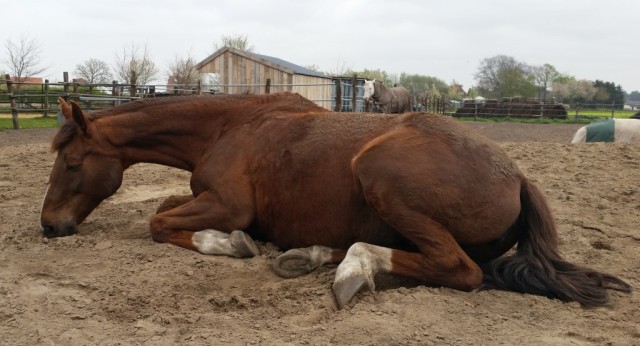
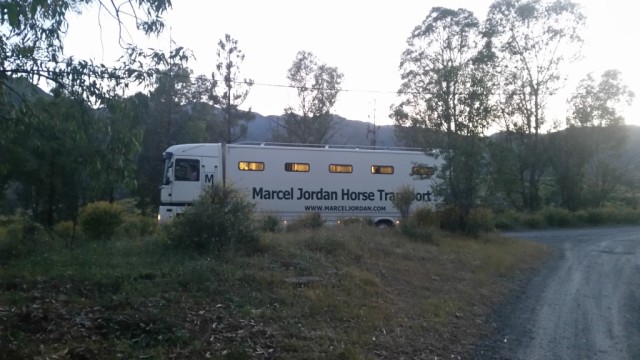
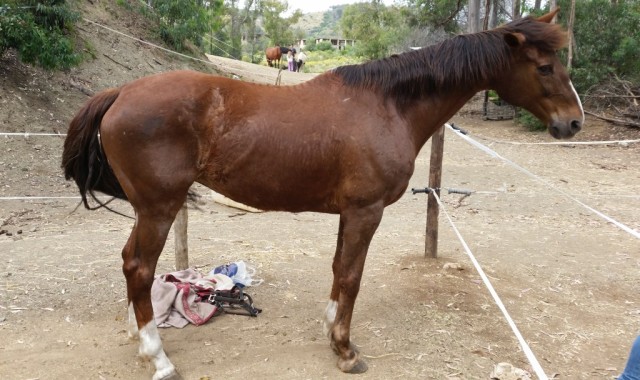


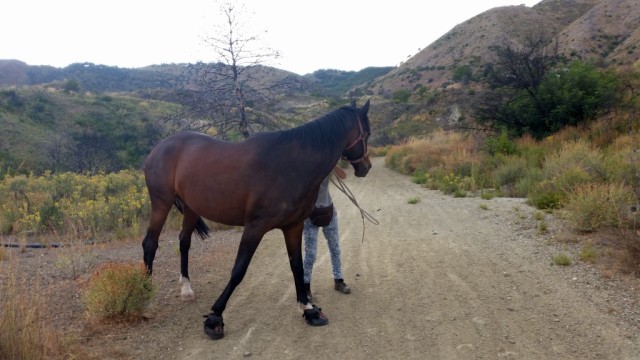
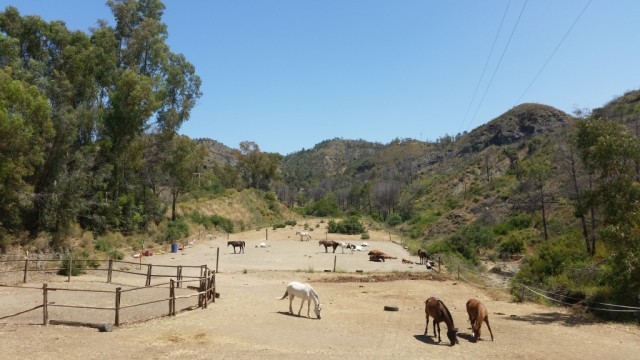
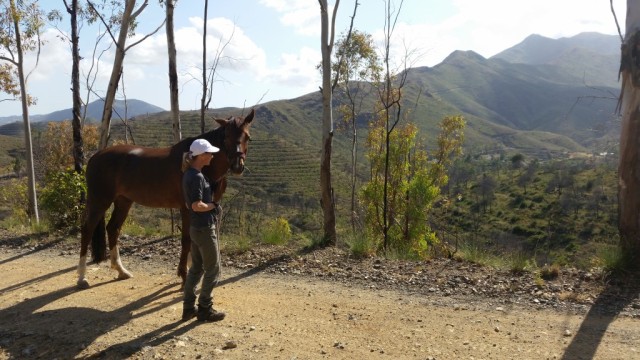



so natural horsemanship out of favour…..,.what words to label our efforts now ?…..I like the phrase intelligent horsemanship. Just same time as you moved south, I moved north with 2 horses from Malaga to Scotland; around 3000kms. They travelled well. It was a return journey for us after 2 years; my own horse fell sick (kidney malfunction ) 2 successive summers so I pre-empted a third by returning to Scotland. Other than that my horses did fine in spain and we did lots of trail riding.
So good luck with your equines…Patrick
Dear Patrick
Thank you for your words of encouragement. It is refreshing to hear someone else’s experience.
Be well!
Andrew